A visit to “The House in the Woods: Magical Tales of the Brothers Grimm” revealed the ways that Jacob and Wilhelm Grimm’s Children’s and Household Tales (1812) have evolved over the centuries, soaked into the very bones of narrative structures, and remain alive to this day.
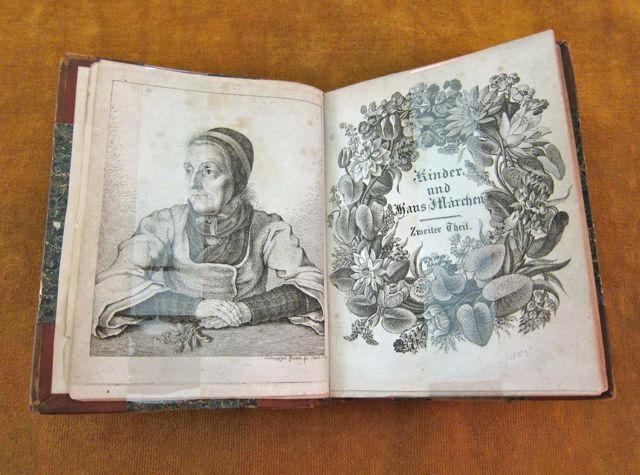
Martha Scott, the curator of this exhibit at the Osborne Collection, generously took the time to walk me through the collection of illustrations, pop-up books, and art that she had gathered to celebrate the 200th anniversary of Children’s and Household Tales. During the tour, I appreciated Ms. Scott’s extensive knowledge of the different versions of the tales and her witty engagement with the illustrations.
For background information, Scott supplied me with a copy of the notes that rested in plastic sleeves on the display cases.
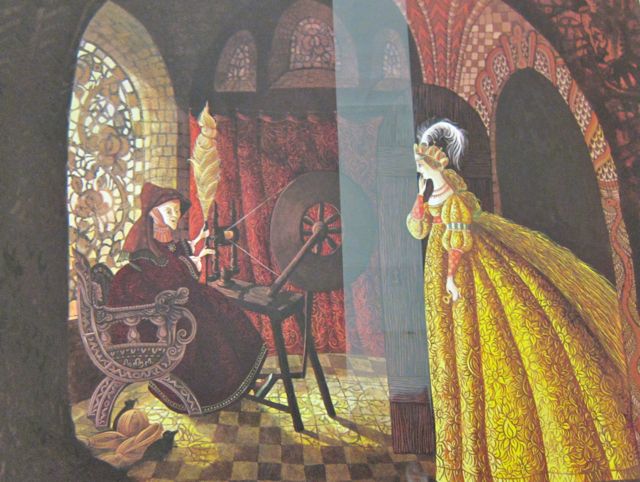
From a very young age, the phrase “The Brothers Grimm” has captivated me, and when I see it in my mind’s eye, I visualize the letters G-R-I-M-M in mahogany-inked calligraphy with extravagant loops like twisted roots for the downward swoops of the “r” and double m’s.
In addition to the distinctive twin m’s, it is possible that the romance of the name is in the word order. Whereas “the Grimm brothers” sounds like a family singing act from Nashville, The Brothers Grimm could independently serve as the title of an ancient fairy tale that stars two solemn brothers who live in a dark forest cottage and spin tales by a hearth on winter evenings.
The real Jacob and Wilhelm, scholars with an interest in preserving oral history, most likely did not personally recite fairy tales around hearths in cottages. However, the imaginative illustrations I saw in “The House in the Woods” left the mystique of the Brothers Grimm intact; the more I learned, the more enchanting the stories became.


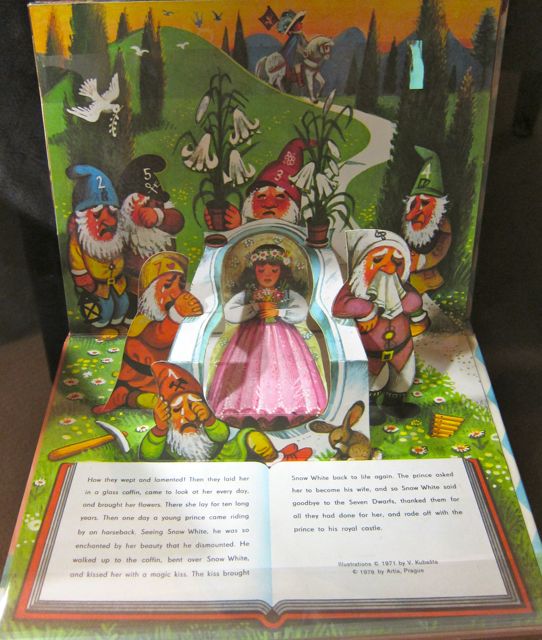
“In the first edition of Children’s and Household Tales (1812), the wicked queen is Snow White’s natural mother. In the second edition of 1819, the Grimms substituted a stepmother as villain.” (exhibit notes, Martha Scott)
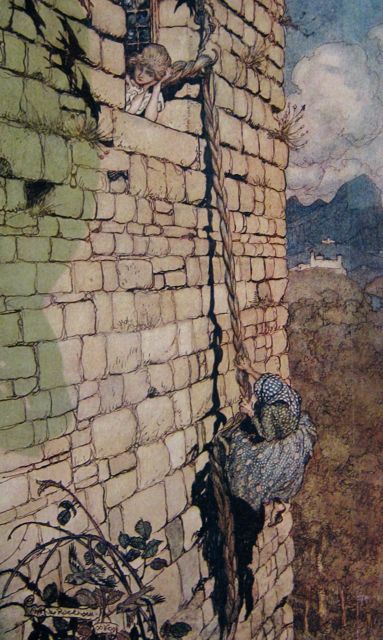
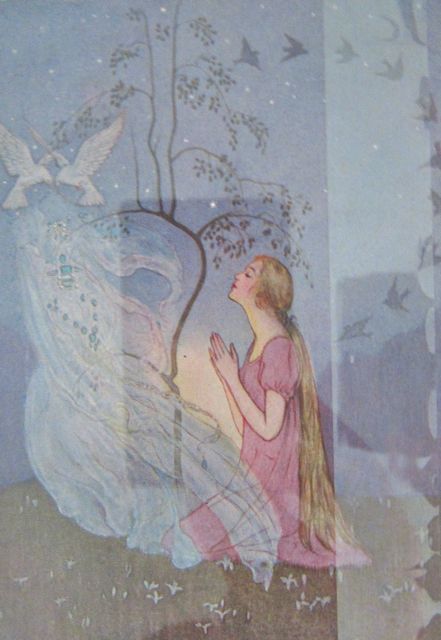
Instead of relying on a fairy godmother, Cinderella “sings to the magic hazel-tree which grows from her mother’s grave, and the birds toss down a splendid dress.” (exhibit notes, Martha Scott)


“Walter Crane’s The Frog Prince was first published in 1874 . . . . The Grimms chose “The Frog King, or Iron Henry” as their opening story because they considered it one of the oldest tales in Germany. In their version, the princess, disgusted by the frog’s request to sleep in her bed, throws it against the wall, whereupon it transforms into a handsome young prince.” (exhibit notes, Martha Scott)

“British illustrator Warwick Goble pictures Snow White and Rose Red as they rescue the spiteful dwarf from an eagle.” (exhibit notes, Martha Scott)

The deer is actually the little girl’s brother who has unfortunately drunk from a bewitched stream.
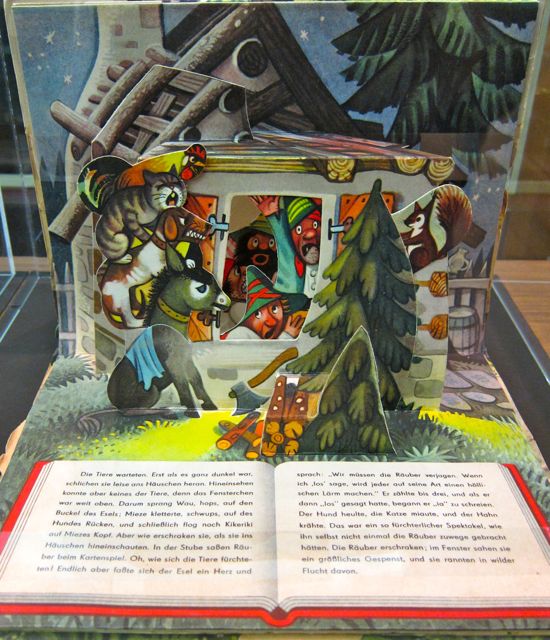

“This ‘carousel’ book opens in circular fashion to reveal six three-dimensional scenes.” (exhibit notes, Martha Scott)
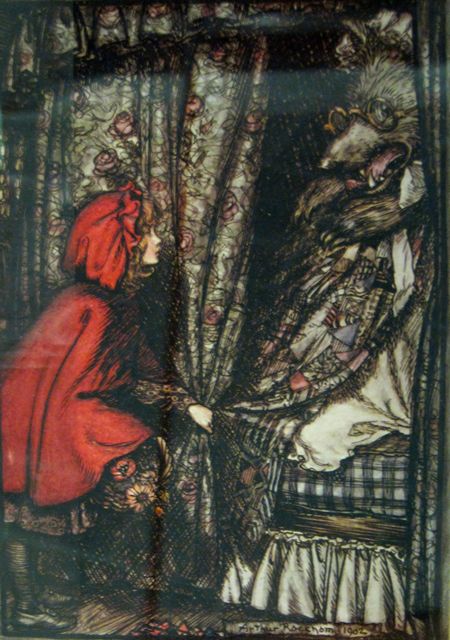
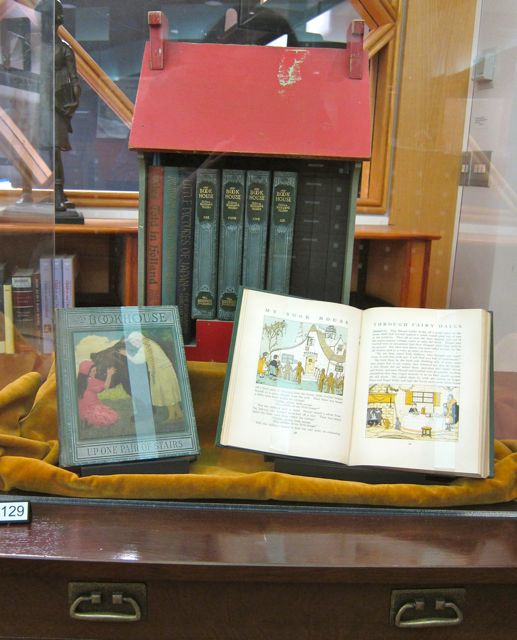
“This wooden house contains the six volume My Bookhouse and the three volume My Travelship collections . . . . The My Bookhouse collection was first published from 1920 to 1922.” (exhibit notes, Martha Scott)
Thank you Martha Scott, Leslie McGrath, and the Osborne Collection for an enriching afternoon in the magical company of the Brothers Grimm! Your book house is a jewel worthy of the finest scholars in the land!
4 replies on “Brothers Grimm in the House in the Woods at the Osborne Collection”
Thanks for this post — a beautiful exhibit. How long will it be there (or is it finished?)
I have always loved and been haunted by Grimm’s fairy tales.
Ellen
Alas, it is finished. I liked what you wrote about being haunted by Grimm’s fairy tales. That’s the perfect word. Thank you for reading the post and for your comment!
Hello, I am discovering your blog (over public library facebook) . It is very nice ! (pictures and creations…). Excuse my english ! I arrived in Canada 4 months ago.
Thank you so much for your comment, Odile. I’m very happy that you discovered my blog on the TPL Facebook page. Welcome to Canada! There’s no need to apologize for your English!